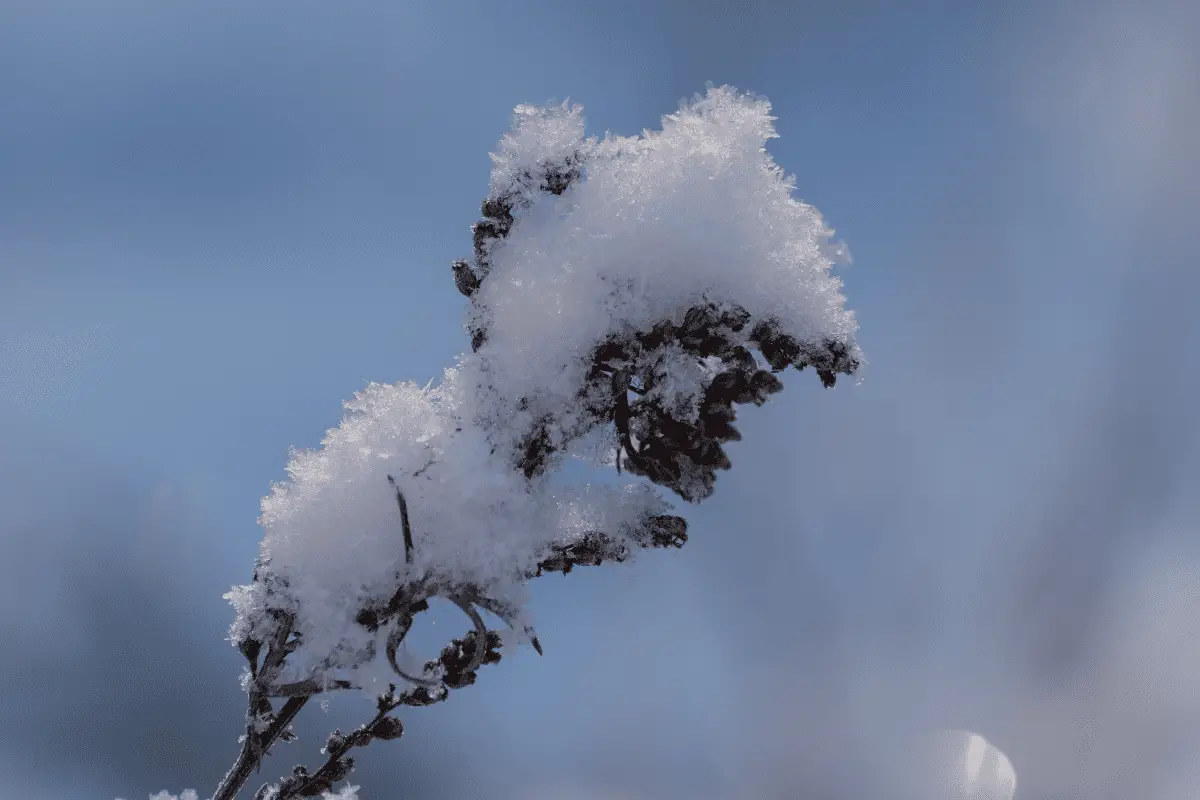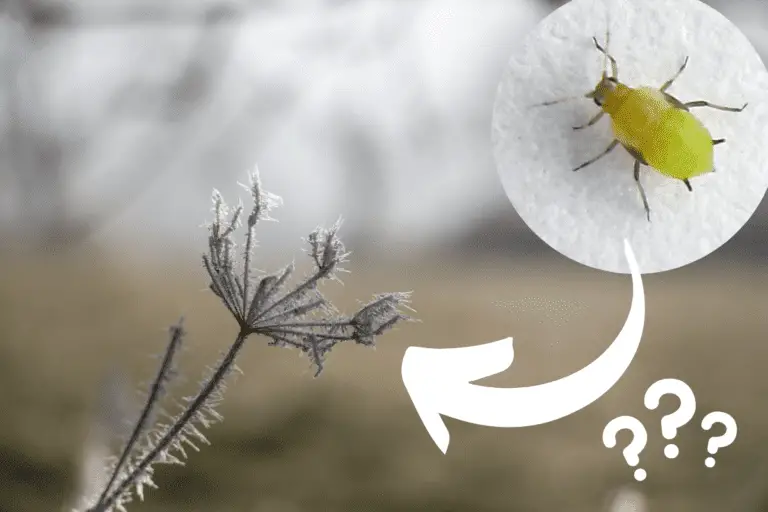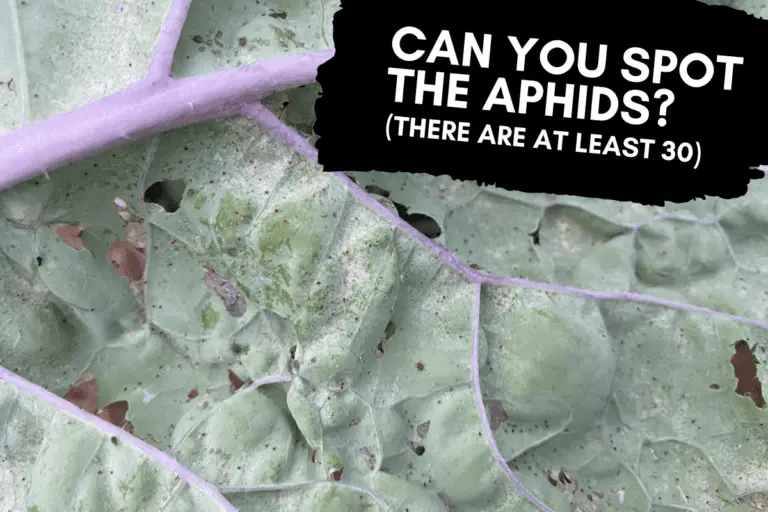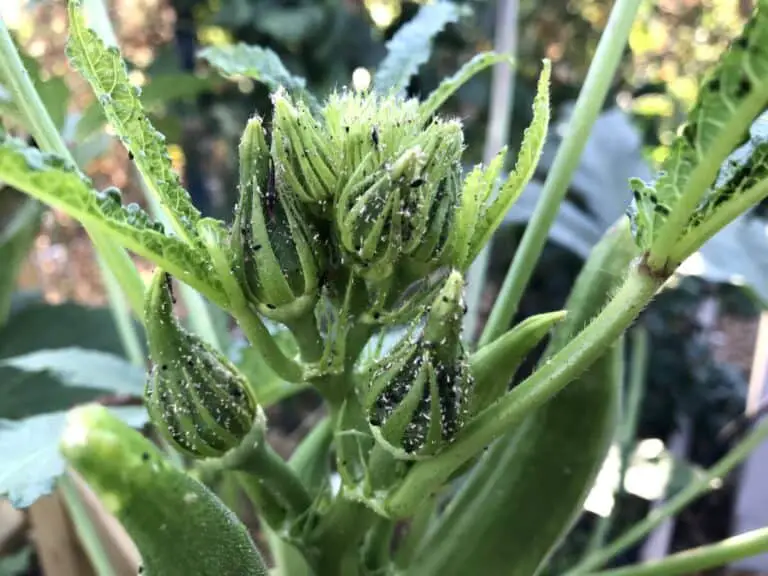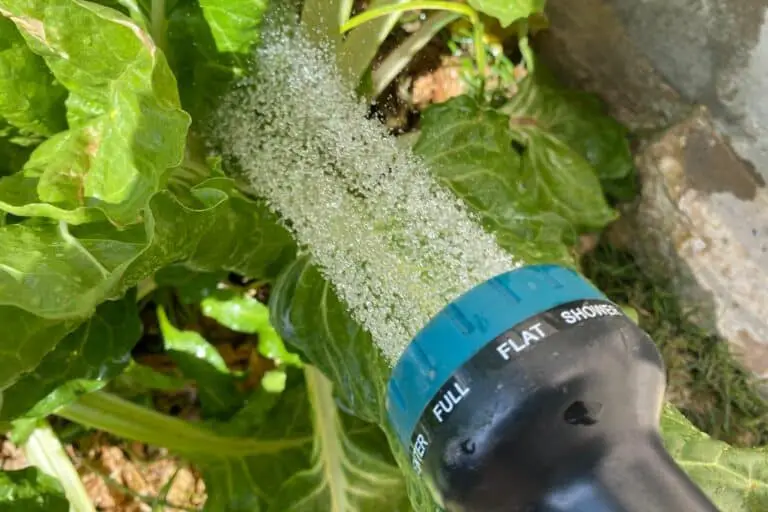Will Aphids Die in Winter? 5 Things You Need to Know
If you like to garden, you might have wondered if winter is going to solve some of your pest problems, especially if you’ve dealt with aphids recently.
Will the cold weather help you come spring? Will winter kill off aphids and other garden pests?
Aphids can survive in winter through adaptation, diapausing, freeze tolerance, and freeze avoidance. What matters most for survival is not necessarily how low temperatures get but how long winter lasts. Generally speaking, the longer the cold weather duration, the higher the aphid mortality rate.
There are over 4,000 aphid species found across the world, which means there’s a great deal of variance in terms of which aphids can survive in cold weather and for how long.
If you’re interested in understanding the science behind how aphids overwinter and remain in your garden until spring, you’ve come to the right place.
Do Aphids Die in Winter? What Science Has to Say
Years ago, I dealt with a nasty aphid infestation in my garden. I was something of a newbie to gardening, and within a month or so, aphids had arrived unnoticed, reproduced prolifically, and started clustering around various plants. At the time, I didn’t know anything about aphids, so I started reading (and reading and reading)–taking a look at gardening blogs as well as articles from scientific journals.
Over time, I’ve learned a lot about aphids, and I’ve come to realize that these insects are essentially the preppers of the bug world. Once you start getting into the science of aphid survivalism, you’ll realize that these little pests have learned how to adapt when it’s cold outside.
For example, one study examined 9 different aphid species to record how they responded when exposed to 28℉ (-2.2℃) weather for extended periods of time. The researchers were hoping to see which aphids could survive at that temperature with no more than a 50% mortality rate.
Of the 9 species tested, only 5 had survival rates of at least 50% for extended periods of time. Of those 5 species, here’s how long each species retained at least 50% of its population:
- Violet aphids (Myzus ornatus): 16 days.
- Peach Potato Aphid (Myzus persicae): 25 days.
- Buckthorn-Potato Aphid (Aphis nasturtii): 28 days.
- Potato Aphid (Macrosiphum euphorbiae): 29 days.
- Short-Beaked Clover Aphid (Nearctaphis bakeri): 54 days.
Just to be clear, this means that members of these 5 aphids species–often no more than 1-3mm in length–were able to subsist for weeks on end even though they were surrounded by sub-freezing weather conditions (which is frankly incredible).
As you can see, there’s variance in these results. Some aphid species couldn’t maintain at least 50% of their population in subfreezing weather. Others saw high mortality rates within 2-3 weeks. Still others lasted nearly a month without too much harm to their overall population. And one species lasted nearly two months without witnessing any precipitous decline in their numbers.
Long story short, if you’ve seen aphids in your garden, there’s no way to know which aphid species you’re dealing with or how long they can withstand cold weather conditions (unless you send specimens off to a lab and conduct your own experiments—and for me, like most people, that’s never gonna happen!).
If you’d like to get a sense of just how different aphids are from each other, you can take a quick peek at articles I’ve written about black aphids, green aphids, yellow aphids, white aphids, and red aphids.
Do Aphids Die When It’s Cold Outside?
At this point, you might be wondering, “Why aren’t aphids dying in winter? Why don’t freezing temperatures kill them?”
Aphids are remarkably resilient insects, and they’ve got several things going for them when it comes to withstanding harsh weather conditions and keeping their populations alive until spring.
Here are the top 5 factors that play a role in aphids’ ability to overwinter:
1. Geographic Adaptation
Aphids didn’t arrive in your garden out of nowhere. As I’ve noted in this article on where aphids come from, they had to have either flown in from a nearby location or previously overwintered in eggs.
Aphids are not only cold-hardy. They’re also highly adaptive. If aphids are in your area, that means that those particular species can tolerate, to some extent, the local weather conditions. Otherwise, they wouldn’t be there in the first place.
Unless your area experiences highly unusual winter weather patterns–either extreme winter cold, extreme winter duration, or both–the aphids that have acclimated to your local environment have adapted to the cold weather in your area, and a percentage of them will survive the winter months.
2. Diapausing
I like to think of diapausing like it’s the bug version of hibernation.
To conserve what little energy they have over winter, aphids reduce their activity as much as possible. If aphids are attempting to overwinter in their adult or nymph stages, they’re not going to be doing anything beyond remaining where they are. If they’re in their larval stage–tucked tightly inside little eggs–they won’t even develop all that much.
Simply put, their goal is to survive until the weather warms up so that they can begin feeding and reproducing once more. In order to do so, they’ll slow down any biological functions that aren’t necessary for survival.
3. Freeze Tolerance
According to one study, cold-hardiness in insects can be broken down into 5 distinct categories: freeze tolerance, freeze avoidance, chill tolerance, chill susceptibility, and opportunistic survival.
But putting aside these categories, I want to focus on the matter of “freeze tolerance.” What’s important to understand about freeze tolerance are what it is and how it works.
Freeze tolerance occurs when insects create biochemical compounds in their cells that offset freezing temperatures. Their tissues will freeze, but their cells will remain unfrozen.
In particular, aphids are able to produce glycerol, an antifreeze-like substance (sometimes referred to as a cryoprotectant) that enables the bug’s cells to subsist at a lower freezing point without the onset of cellular ice crystals that would otherwise expand, burst the cells, and kill the aphid. Some aphid species, such as the Cypress pine aphid, have been shown to increase the overall amount of carbohydrates and proteins as the year progresses and as they prepare for colder weather.
For freeze tolerant garden pests, a gradual warming is ideal. If external conditions warm too quickly, they’ll experience higher mortality rates–which is bad for pests but good for gardeners. So if you live in an area that experiences extreme temperature fluctuations–as we do here in North Texas–you’ve got an extra something to be thankful for.
4. Freeze Avoidance
Unlike bugs that generate antifreeze chemicals so as to survive even when frozen, those that use freeze avoidant strategies survive in winter through related but different mechanisms.
They don’t generate small amounts of heat (like honeybees). Instead, they undergo a process known as “supercooling.” That is, they actually lower the point at which freezing takes place within their bodies below the 32℉ (0℃) threshold.
Simply put, to avoid freezing (even at temperatures below the freezing point of water), freeze avoidant bugs will actually rid their bodies of so-called “ice-nucleating agents,” which is a complicated way of saying that many bugs have the ability to physically remove certain trace minerals, bacteria, and fungi from their bodies, elements that would otherwise lead to the formation of cellular ice crystals.
Let’s pause for a moment and take this in: As cold weather arrives, freeze-avoiding insects have the capacity to purposefully expel from their bodies a variety of microscopic elements that would otherwise kill them during winter.
So are aphids not merely freeze tolerant but freeze avoidant as well?
This is a tough question to answer with certainty–especially since there are so many aphid species–but it appears that aphids rely more on freeze tolerance mechanisms than on freeze avoidance ones, although it’s possible that various species subsist using both processes to some extent.
5. Length of Exposure
As this study demonstrated, the duration of exposure to cold weather is one of the most important factors when it comes to whether or not aphids will survive in winter.
What’s interesting about aphids is how high their mortality rates are, even for a species that’s fairly cold tolerant. In general, about 80% of aphids die off during the winter months regardless of the stage they’re in (adult, nymph, or larva).
This means that 20% of the aphid population survives each winter, but given aphids’ ability to reproduce quickly and adapt to changing environmental conditions, that 20% is more than enough to repopulate and spread to new areas.
This is why, generally speaking, the duration of winter matters more than how cold it gets. As we saw at the beginning of this article, the longer the winter, the higher the aphid mortality rates.
If your area experiences long, cold winters, there’s a higher likelihood that you’ll deal with fewer aphids come spring. Aphids won’t disappear entirely from your region, but their numbers will be greatly diminished.
Where Do Aphids Go in Winter?
If you’d like to know what aphids do to overwinter and how you can protect against their return in spring, check out my article on how aphids survive cold weather.
To put it simply, when aphids are overwintering, they’re typically found on branches or the undersides of leaves, in or around buds, in the cracks and crevices of tree bark, or even among fallen leaves and mulch.
In each instance, these locations provide a bit of protection against the winter weather conditions (some more than others).
But the article itself goes into much more depth—and has several helpful photos—so if you have a moment to take a look, you’ll know all you need to know about aphid overwintering patterns and how you can kill them off prior to, during, and after cold weather has arrived.
Want More Information?
Aphids are a global nuisance, so I’ve countless hours writing about them in order to help you garden better. If you’d like to learn more, check out these articles:
- Are Aphids Harmful to Humans? Things You Should Know
- Are Aphids Poisonous?
- Can Plants Recover from Aphids? Tips to Save Your Plants
- Should I Throw Away a Plant with Aphids? Things to Consider
Credit to Magnus Johannson for the photo adapted for this article’s featured image.
